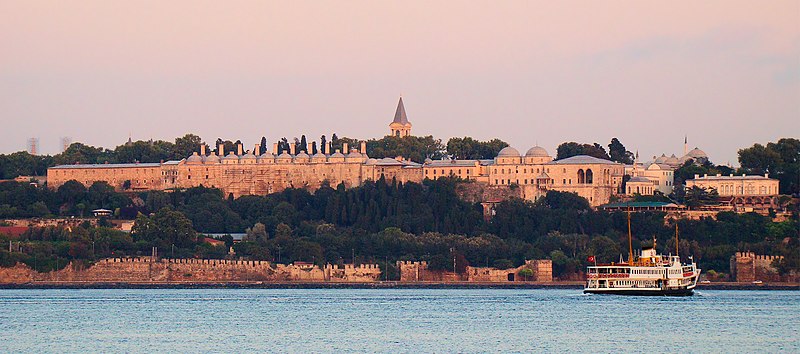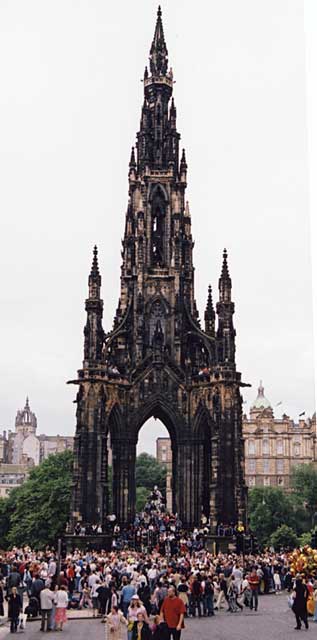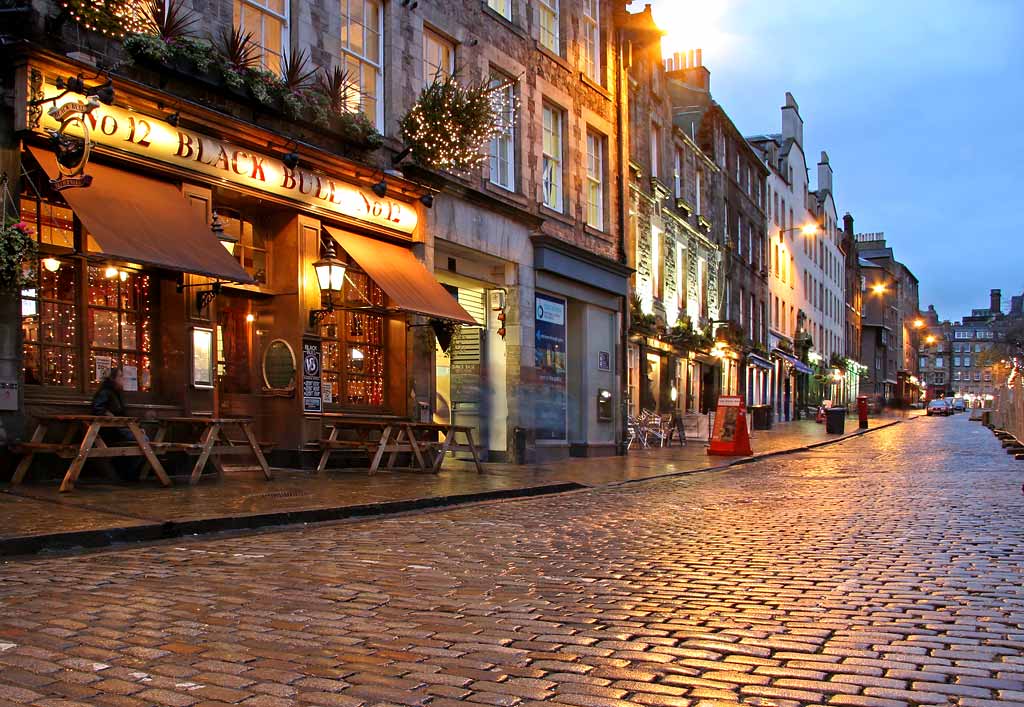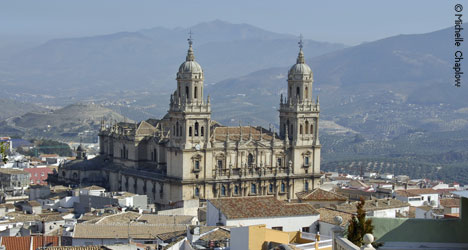
Jaen is a city that every lover of Andalucia should visit, enjoy and - if possible - spend a good deal of time getting to know. Not only does the city have an ancient and fascinating history, but the castle that towers over its winding streets offers some of the most quintessentially Andalusian views there are to be had. Stand at a prime lookout point at the top of the Santa Catalina castle and you will look down on a charming provincial capital that drapes over hills thus sending streets winding up and down steep inclines. From here you'll also enjoy the towns architecture and monuments. Fields and olive groves sweep out beyond the town and as you turn to the south and southeast, the spectacular peaks of the Sierra de Jaen and Jabalcuz rise and fall in the castle's backdrop. And if you find these views too breathtaking to enjoy for only a few moments, stop in at the Parador. There may be a castle room with a view just waiting for you.
Click here for Andalucia travel books

Jaen´s name comes from the Moorish word geen or jayyan, meaning stopping post on a caravan route. King Ferdinand III captured the city from Ibn-Nasr, who subsequently founded the Nasrid kingdom of Granada in 1246, and Jaen had a strategic position on the frontline between Christian Spain and Moorish Granada. It was used as the gateway for the armies in the Reconquest, and Ferdinand and Isabella launched their final assault on Boabdil´s Granada from here in 1492. Its Moorish old town, now the hillside barrio of La Magdalena, had many mosques, while the Moorish baths are the largest in Spain.
With just 116,012 inhabitants, Jaen is the least populated capital of all the provinces in Andalucia. In its old quarter, there exists some of what must have been a spectacular city. It is also home to the world's largest collection of Iberian objects. In the 1970s, a unique collection of sculptures dating from about 500 BC were discovered nearby and they are now proudly exhibited in the city's main museum. The city has a thriving university - one of the oldest in Spain. Market days are on Thursdays.
 Jaen province has more olive trees than any other province in Spain, 40 million in fact - not surprising since its economy is based on olive oil. Liquid gold, as the locals call it, appears in all aspects of Jaen´s gastronomy, from tortas de matalahúva (aniseed cakes), ochíos (olive oil and aniseed bread rolls) and Christmas sweets, to nachas de Jaen, the local version of migas (breadcrumbs fried in olive oil); and pipirrana, a gazpacho-type salad of tomato and green pepper, onion and fish, with a dressing based on, you´ve guessed it, olive oil.
Jaen province has more olive trees than any other province in Spain, 40 million in fact - not surprising since its economy is based on olive oil. Liquid gold, as the locals call it, appears in all aspects of Jaen´s gastronomy, from tortas de matalahúva (aniseed cakes), ochíos (olive oil and aniseed bread rolls) and Christmas sweets, to nachas de Jaen, the local version of migas (breadcrumbs fried in olive oil); and pipirrana, a gazpacho-type salad of tomato and green pepper, onion and fish, with a dressing based on, you´ve guessed it, olive oil.
Jienense, as the locals are known, have a cuisine all their own – at least from their point of view. To the outsider, the menus of the day in Jaen will probably look very similar to those of any other town or village in Andalucia. To the insider, however – whether from Jaen or the rest of Andalucia – many dishes do offer a unique touch. Being an inland province, Jaen is better known for game and fish from local rivers – trout being a local favourite – than for the seafood you’ll find served just two hours away on the coast. You should, therefore, make a point of sampling the quail, deer or, of course, the trout. There is one local speciality, however, that does come from the sea and that is “Bacalao a la yema”, or cod a la egg yolk (most certainly tastier than it sounds). There is a fresh salad that is particularly tempting. If you can say “pipirrana”, then you can order yourself this wonderful plate of fresh chopped tomatoes served with a very special dressing made of local olive oil, green pepper, garlic and salt all pureed together. Very tasty, let me assure you. If you’re looking for an interesting beverage to either try or take home as a gift for friends, then look into a bottle of locally produced anis or resol liqueurs.
Fiestas in Jaen: Holy Week celebrations in Jaen are famous and people travel from all over Spain to watch the processions. Other important local fiestas include San Antón's Day in January when people gather round bonfires, eat and dance, Carnaval in February, Corpus Christi in June and finally Cruces de Mayo, a festival celebrated in many villages and towns throughout Jaen where people decorate the streets and patios with altars made of flowers to commemorate the Holy Cross.
Jaen’s Top 5:
- Jaen Cathedral. Inside Jaen´s impressive Renaissance cathedral, behind the high altar, is a much-prized religious artfect: a cloth said to have been used by St Veronica to wipe Christ´s face as he carried the cross to Golgotha. The lienzo del Santo Rostro (cloth of the Holy Face) has an image of his countenance, allegedly, and is housed in its own chapel. The sacred cloth is removed from its reliquary on Friday mornings so that the faithful can kiss the glass box where it resides (the priest wipes the glass after each person). The image has been the subject of many Spanish paintings.
- Arab Baths . Although a palace was built over them in the 16th century, Jaen´s 11th-century hammam have survived another 400 years, and are now the largest baths open to the public in Spain. They were probably constructed on top of earlier (Roman) baths which used local hot springs - you can see Roman ruins through a glass walkway in the basement of the palace, on your way to visit the baths. The perfect horseshoe arches, star-shaped skylights and vaulted brick chambers (hot, warm and cold) were rediscovered in 1913, under the Palacio de Villardompardo, and their restoration project won the Europa Nostra (European Cultural Heritage) prize.
- Santa Catalina Castle. The Castle sits on the top of a hill overlooking the city.
Previously there had existed a fortress of Arabic origin (Abrehui's castle), of which some remains still exist. The current construction is of Christian origin, raised after the conquest of the city by Ferdinand III of Castile, called the Saint, in 1246. The Castle itself is very tourist-friendly with a lovely, easy to follow tour set up inside. This includes multimedia presentations at different points. The best part, however, is standing atop the castle to enjoy the panoramic views of the city and the surrounding mountain ranges. - Museo Provincial de Bellas Artes. The Provincial Fine Arts Museum in Jaen has the World's best permanent exhibition of Iberian objects
- Royal Monastery of Santo Domingo. Used to be headquarters of the University of Jaen, this impressive monastery is located within the district of Magdalena.
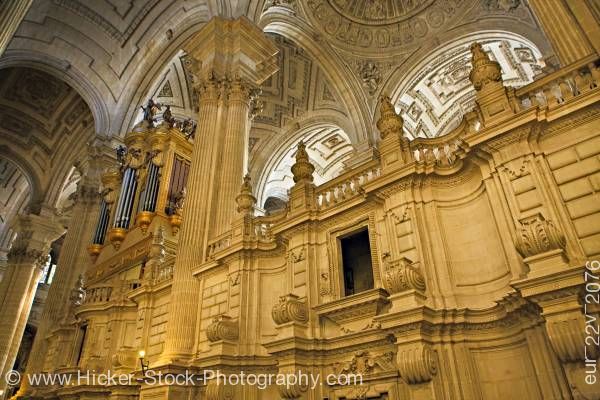
http://www.euroresidentes.com/euroresiuk/guides-spain/guide-to-jaen.htm
http://www.hicker-stock-photography.com






